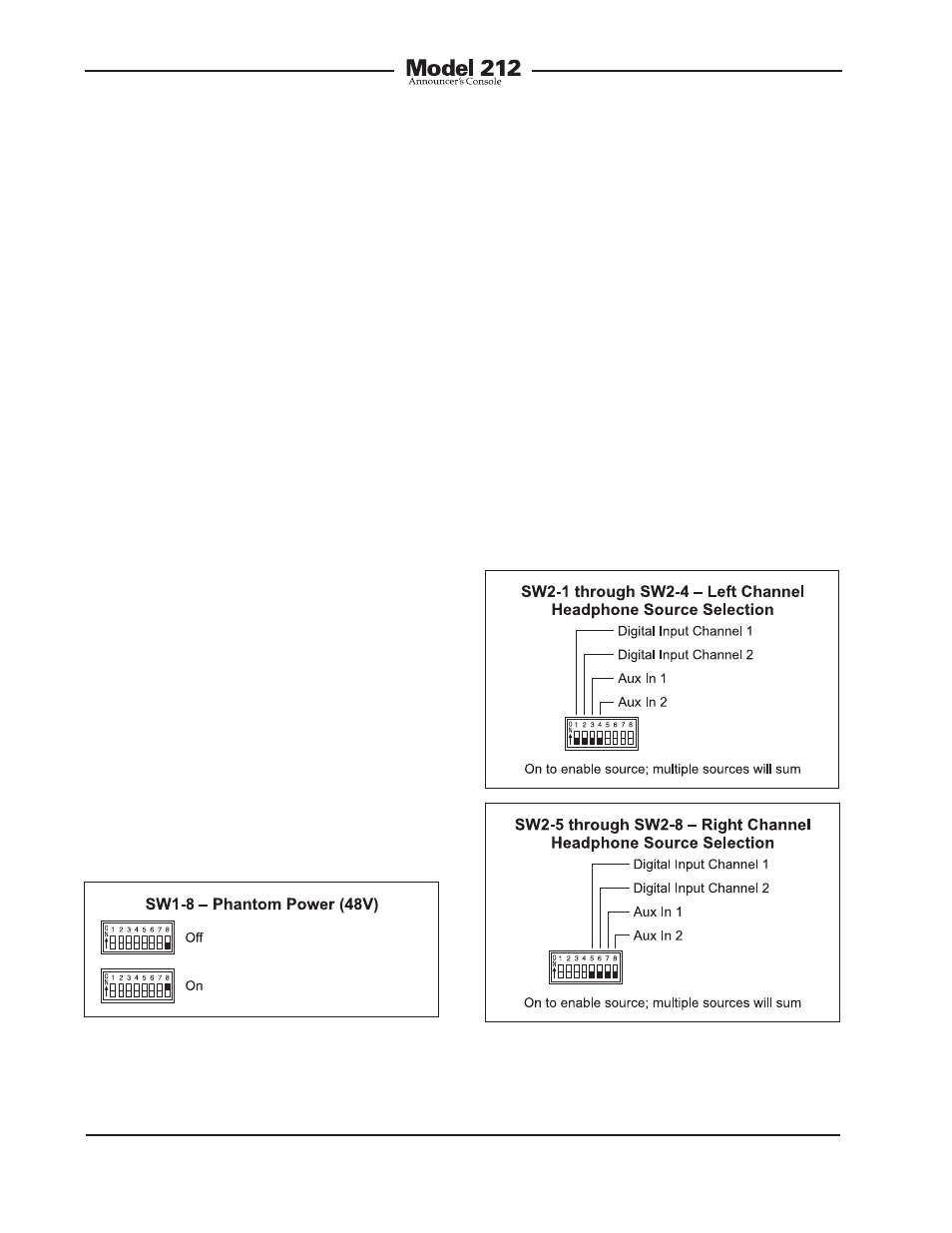Headphone source selection – Studio Technologies M212-00151 User Manual
Page 16

Issue 2, June 2006
Model 212 User Guide
Page 17
Studio Technologies, Inc.
could be correct. It’s also possible that a
microphone with a very low-level output,
such as a ribbon-type, would need 50 dB of
gain. But in general, the 20, 30, and 40 dB
gain settings will serve most applications.
Note that if no gain switch is set to its active
(on) position the preamplifier will operate
at unity (0 dB) gain. In this mode the pre-
amplifier will remain stable, but is intended
for use only during factory testing. A valid
exception would be where a line-level sig-
nal is connected to the microphone input.
This could occur with a special Model 212
application. But with a microphone con-
nected as the input source one should
never use the 0 dB setting. The issue is
that with no gain added to the microphone
input signal, the relative noise floor on the
main and talkback output channels will be
much too high. In conclusion, the 0 dB gain
setting doesn’t highlight a problem, but
simply reflects the unit’s gain structure.
Phantom Power
The Model 212 can provide 48 volt
phantom power to the microphone input.
Switch SW1-8 controls whether or not
phantom power is active. By phantom
power’s very nature it could be left applied
to the microphone input at all times. But
generally people prefer to turn it off unless
it is required for a specific microphone.
Figure 6. Left and right channel headphone
source selection settings
Figure 5. Phantom power switch settings
Headphone Source Selection
Switch assembly SW2 is used to configure
the source or sources that are routed to
the stereo headphone output. Up to four
sources may be available with the choices
being digital input channel 1, digital input
channel 2, auxiliary input 1, and auxiliary
input 2. The digital input channels are pro-
vided by the selected digital input source.
The digital input source is configured
from these choices: the AES3id input, the
optional AES3 input, or the bidirectional
digital interface. The auxiliary inputs are
analog and available only if optional line
input cards have been installed. Alternate-
ly, a special Model 212 configuration may
have been implemented that uses one or
both of the auxiliary inputs.
